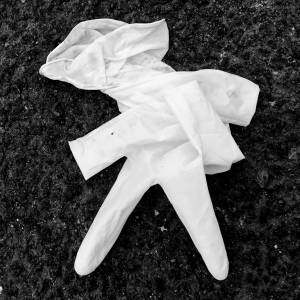Haunt
I spotted the place on my way home from Greystones, where I'd stayed the night with Dave. I had already pulled in to a bus stop to photograph a view of the sea from halfway up that steep road over Bray Head, a risky enough place to park in busy traffic. Then I turned and saw the house, backed into trees on the upper slope behind me. It looked rather unwelcoming, shy or foreboding, with a big farm gate barring its apparent access. But I made a decision and backed the car across the road at the entrance.
Abandoned houses are a common photography target, even a cliche (but then, so is practically everything else). They have a pull, a fascination. As the imagist poet T.E. Hulme put it in his couplet Image:
Old houses were scaffolding once
and workmen whistling.
And then, of course, they were home. As another Modernist poet wrote:
Houses live and die: there is a time for building
And a time for living and for generation
And a time for the wind to break the loosened pane
And to shake the wainscot where the field-mouse trots
And to shake the tattered arras woven with a silent motto.
Recessed in the broad, bright-clouded afternoon, a crestfallen former home, a haunt. I pushed through brambles and looked in a window on the left side. The bricked-up windows had masked collapsed roofs and floors. There may have been a way in at the back. But it didn't look promising. So I walked over to some outbuildings: barns and sheds, the obligatory phallus, older than Pompei; they often appear to be portraits of the same little prick, plump as a pupa, perhaps waiting to hatch that more exotic species, the graffito of female genitalia (a sans-serif I in brackets), rarer than the Emperor Butterfly.
Opposite a far larger barn clothed in ivy breeches I found a couple of modest farmhouses, one being used as an animal shed, a large syringe in the grass, probably for cattle or sheep. This is where I glanced through the broken diamond panes. In the other farmhouse, with its awry, mossed over steps, I found another phallus, an indoor species. Also a different view of the big barn, where someone had stacked logs: signs of work, of life paying a visit.
And someone (a nearby farmer?) must be cutting the grass, or scything it. I walked over to the huge (cypress?), its bark like a congealed passage of lava. Clouds parted again, dappling the trunk. Life, eh? Over nearby fields, the little town winked in the sun.
- 0
- 0
- Canon EOS 5D Mark II
- 1/100
- f/10.0
- 50mm
- 400

Comments
Sign in or get an account to comment.


